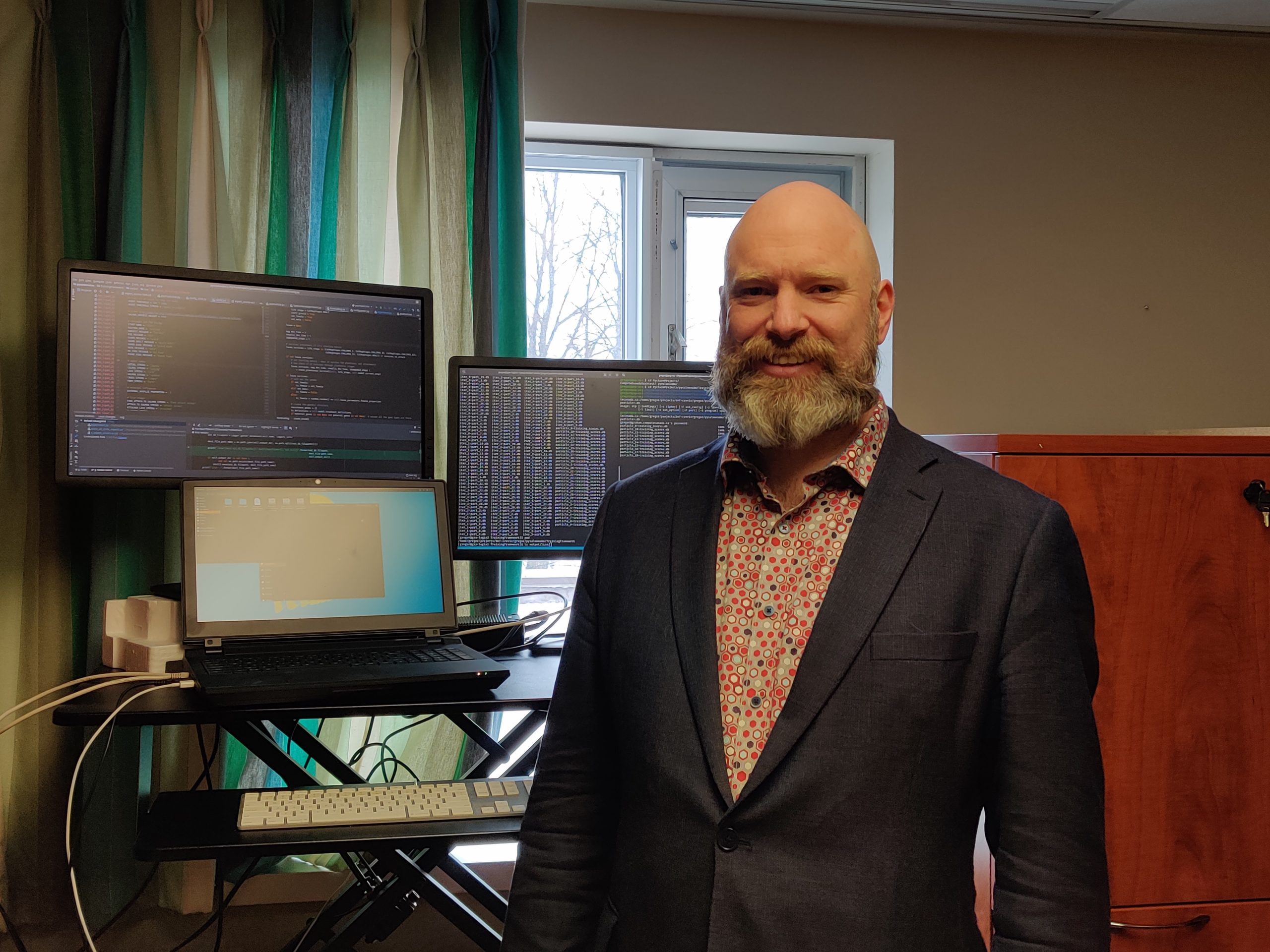Spring, 2020
Gregor McEwan wants to help salmon farmers manage sea lice on their farms, and he’s using supercomputing to do it.

It seems odd to think of research into aquatic life involving high-powered computing, but that’s what McEwan, a research scientist, is doing. He works under the supervision of Professor Crawford Revie in Revie’s lab in the Atlantic Veterinary College’s Department of Health Management at the University of Prince Edward Island.
Salmon farming is an industry worth more than $16 billion worldwide, and Canada is the industry’s fourth-largest producer after Norway, Chile and Scotland.
Farmed salmon is raised from eggs on land facilities and, when large enough, moved to cages in the sea. The fish are kept in the cages until they reach harvest weight — typically three to five kilograms. After that, they’re sent to processing plants to eventually become fillets available through retail.
But often, in the sea cages, sea lice, among the most pervasive problems facing salmon farmers, invade. They attach to the salmon and feed off the fish’s mucus, flesh and blood, causing discomfort and reduced immunity for the salmon.
“Usually, [due to immunity issues], they then get sick from something else, but enough sea lice will also kill the salmon,” McEwan says. “It’s a major issue for salmon farmers and they’re especially interested in using treatment methods they have — whether chemicals or mechanical treatments such as warm water baths — to solve it.”
McEwan is trying to determine how they can use existing treatments most effectively and in what kind of patterns they should use them.
“I build computer simulations to try out different strategies,” McEwan says. “It’s expensive to try them on the salmon farm in real time, so it makes sense to simulate them on computers.”
To make the simulation work, he must set parameters — such as ‘how many lice are flowing on to the farm?’ — which is tricky. Such information is unknown because it’s not feasible to count lice in the open sea around each farm.
“I take all the historical information I can get about the environment and the farmers’ weekly count records of sea lice on the salmon,” McEwan says. “I train the model with that information and extract the relevant parameters. I use machine-learning algorithms to get the correct parameters for the model. I can use the trend model to create predictions for the future. We can run scenarios where we say, ‘okay, what if this happens, or what if we use this kind of strategy?’”
One of the things McEwan must consider is the ability of the lice to evolve a genetic resistance to the chemical treatments. For example, past research investigated the repercussions of wild salmon coming near the farm cages. Wild salmon carry lice, but McEwan’s discovered that, because their lice are genetically naïve to the chemical treatments, they bring what he calls a “genetic cleaner” to the equation. “Yes, you end up with a few more lice in the short term, but whatever treatments you’re using are more effective and work a lot longer because the genetic resistance is being cleaned out of the population,” he says. “It’s actually a net positive.”
For McEwan’s simulations, ACENET’s resources are vital. His lab has powerful computers, but nothing on the scale of ACENET.
He says without ACENET, everything he’s doing would take months instead of weeks.
“We’d never be finished.”
Spring, 2020